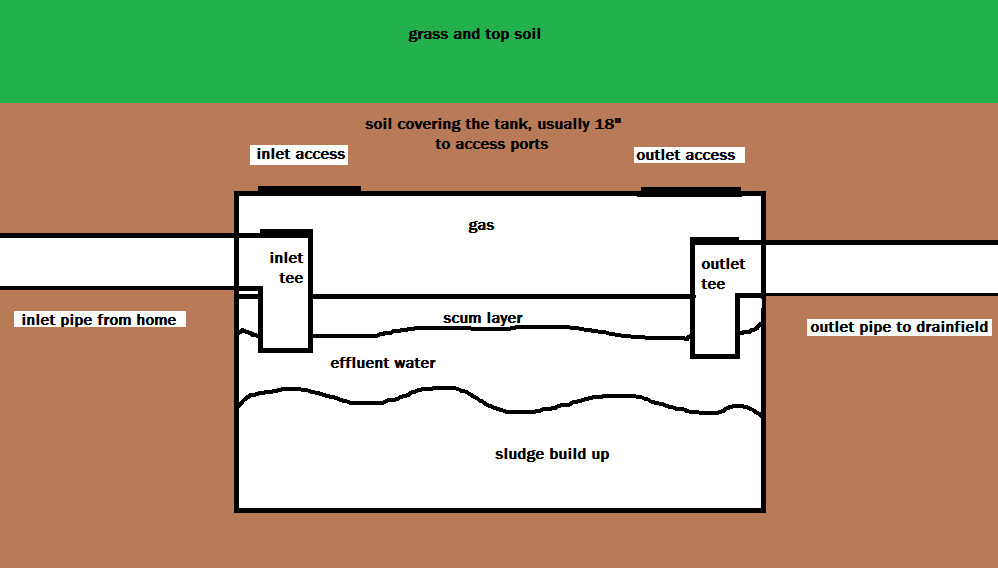Get educated on how a septic system works.
A septic tank is a water tight concrete or plastic container that treats and stores domestic waste. The waste that enters the tank through the inlet tee, stores in the tank. The effluent water gravity feeds out the outlet tee, which is 2" lower than the inlet tee, to the drainfield. The drainfield acts as a cleaning process for the effluent water, eventually absorbing into the soil.
The level of the waste water should always be 2" underneath the inlet pipe. This is called "standing rate". Anything over the inlet pipe, "overfull", indicates the water is not draining properly through the outlet tee to the drainfield lines. This could be due to saturation of the lines, clogged filter or simply just a failing system. If the system is saturated from a leak or rain, pumping the tank can allow the drainfield lines rest for a few days. Pumping the tank will not remedy a failing system, it will only allow storage space for water usage until the drainfield lines can be replaced.
The amount of drainfield is different at each home. The bedrooms are the factor to determining the size of tank and amount of drainfield lines necessary. The local environmental health office will decide the size and location of the system prior to installation, which will be noted on the installers permit.
Septic systems installed after 1999-2000 were required by the state to have an outlet filter. The purpose of this filter is to retain all solids and particles in the tank. It does require periodic cleaning. This process keeps sludge from entering the drainfield lines. Once sludge enters the lines, it disrupts the percolation of the soil, which could lead to failure.

